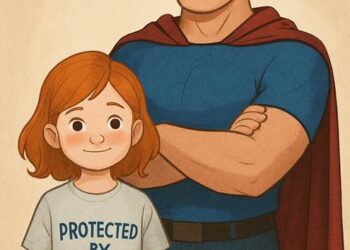Academia has often leaned towards the notion that mate preferences are primarily innate, coming hardwired into our genetic makeup. Yet, a study conducted in 2023 by Emily DuVal, a biologist at Florida State University, introduces a compelling counterargument to this traditional view. DuVal’s research emphasizes the concept of “inferred attractiveness”, a process where individuals, particularly females, observe the choices made by others and use this information to shape their own preferences. This methodology could, according to mathematical models, greatly influence the evolution of preferences over generations.
This concept challenges the conventional theory that preferences are solely innate and instead suggests a dynamic where social learning plays a vital role. The implications of this study are vast, providing a new lens through which the academic community can understand the evolution of mating behaviors and preferences. It encourages a reevaluation of existing notions about attractiveness and mate selection, proposing that what is considered attractive can change across generations through social cues rather than being strictly genetically dictated.
Technological Impact and Economic Factors in Modern Dating
The integration of technology into daily life has undeniably altered modern relationships. Dating apps, for instance, have become a primary tool for connecting potential partners, but their impact is not uniformly positive. Over 90% of Gen Z users report frustration with dating apps, signaling a disconnect between the promise of technology as a facilitator of connections and the reality of its application. This dissatisfaction stems from shallow interactions and unrealistic expectations, highlighting the need for a balanced perspective on the role of technology in dating.
Moreover, economic factors play a pivotal role in shaping modern dating preferences, particularly in the context of short-term mating. A 2022 study revealed that individuals with higher resource-gaining capacity tend to prioritize traits associated with “good genes”, suggesting that economic stability influences mating preferences. This finding underscores the interaction between evolutionary drives and contemporary factors like economic stability, suggesting a nuanced relationship between inherited traits and present-day dating behaviors.
The rise of non-traditional relationships, including sugar daddy dating, open relationships, and polyamory, further illustrates the complexities between economic factors, technology, and evolutionary traits. These relationships, which challenge traditional dating norms, are becoming increasingly common, reflecting a broader societal shift towards accepting diverse relationship structures. This trend suggests a move away from conventional timelines and milestones in favor of prioritizing personal fulfillment and emotional connections.
Exploring the Influence of Communication Styles on Relationship Dynamics
In addition to evolutionary traits, technological advancements, and economic factors, the role of communication styles in modern dating cannot be overstated even dating for seniors has changed dramatically in the past few years. Effective communication serves as the cornerstone of healthy relationships, yet it often faces challenges in the digital age. With the prevalence of texting, messaging apps, and social media, the nuances of face-to-face communication can sometimes be lost.
Research suggests that the manner in which individuals communicate can significantly impact relationship satisfaction and longevity. For instance, a study published in the Journal of Social and Personal Relationships found that couples who engage in open and honest communication tend to report higher levels of relationship satisfaction. Conversely, miscommunication or lack of communication can lead to misunderstandings and conflicts, ultimately jeopardizing the stability of a relationship.
Moreover, the digital landscape introduces new dynamics to communication, such as the interpretation of tone and intent in text-based interactions. Emojis, punctuation, and even the timing of responses can convey different meanings and emotions, potentially leading to misinterpretations or confusion.
The Influence of Nonverbal Cues:
Communication in modern dating extends beyond words to encompass nonverbal cues such as body language, facial expressions, and gestures. While digital communication platforms may limit the direct exchange of nonverbal cues, individuals can still convey emotions and intentions through creative means.

Emoticons, GIFs, and emojis have become integral tools for expressing emotions and enhancing the richness of digital interactions. Understanding and interpreting nonverbal cues in both virtual and face-to-face settings can foster deeper connections and improve relationship dynamics.
Effective communication also plays a crucial role in navigating conflicts and disagreements in relationships. In the digital age, conflicts may arise from misunderstandings in text-based communication or differing expectations fueled by social media portrayals of idealized relationships. Learning constructive conflict resolution strategies, such as active listening, expressing feelings assertively, and seeking compromise, can help couples address issues effectively and strengthen their bond. Additionally, technology offers resources such as relationship counseling apps and online therapy platforms, providing couples with accessible avenues for resolving conflicts and enhancing communication skills.
Prioritizing Emotional Connection Over Traditional Timelines
Recent studies, including the Bumble 2024 dating report, indicate a considerable shift in societal attitudes towards relationships, particularly among women. A growing number of women are rejecting traditional relationship timelines, focusing instead on forming deeper emotional connections. This trend is partly driven by evolving societal norms and the recognition of the importance of emotional intimacy in sustaining relationships. The report highlights that while a majority of women on Bumble seek long-term relationships, a smaller percentage actively pursue marriage, suggesting a departure from societal expectations towards individual preferences.

The prioritization of emotional over physical connections and the rejection of prescribed relationship timelines can be partially attributed to a broader cultural shift. This transition reflects an awareness of the limitations of traditional relationship paradigms and an embrace of more inclusive, flexible approaches to forming and maintaining relationships. It underscores the role of personal choice and autonomy in modern dating, marking a notable evolution from practices influenced primarily by societal expectations.














































































































